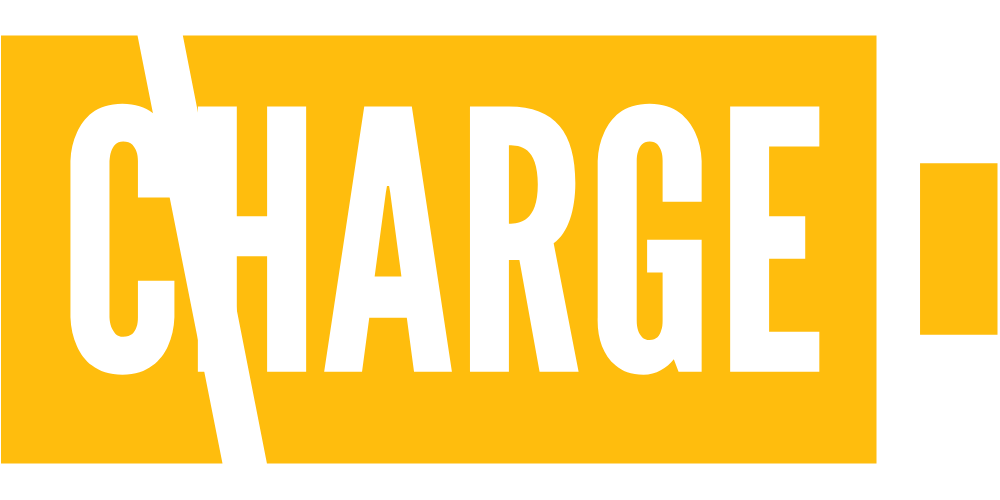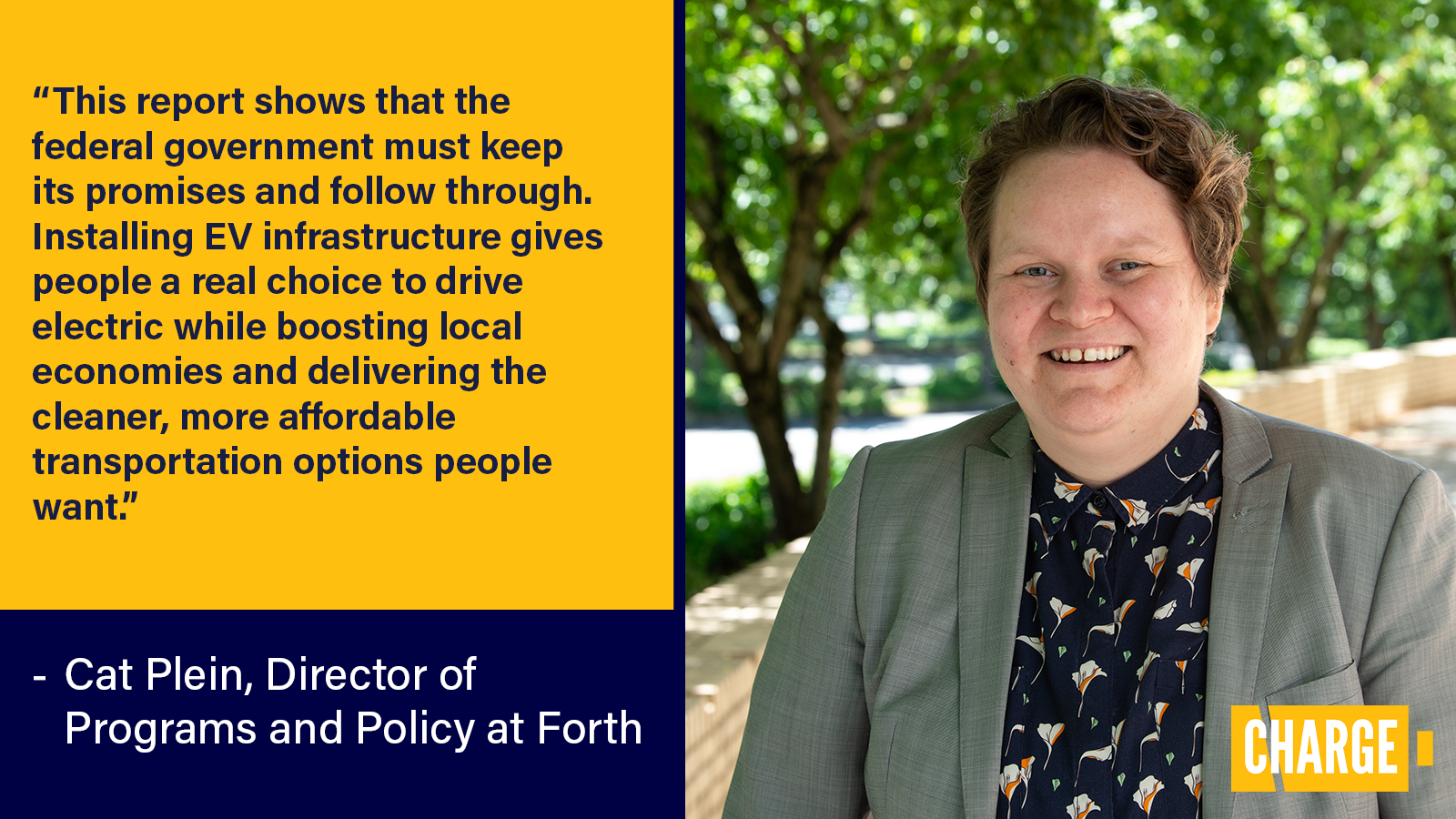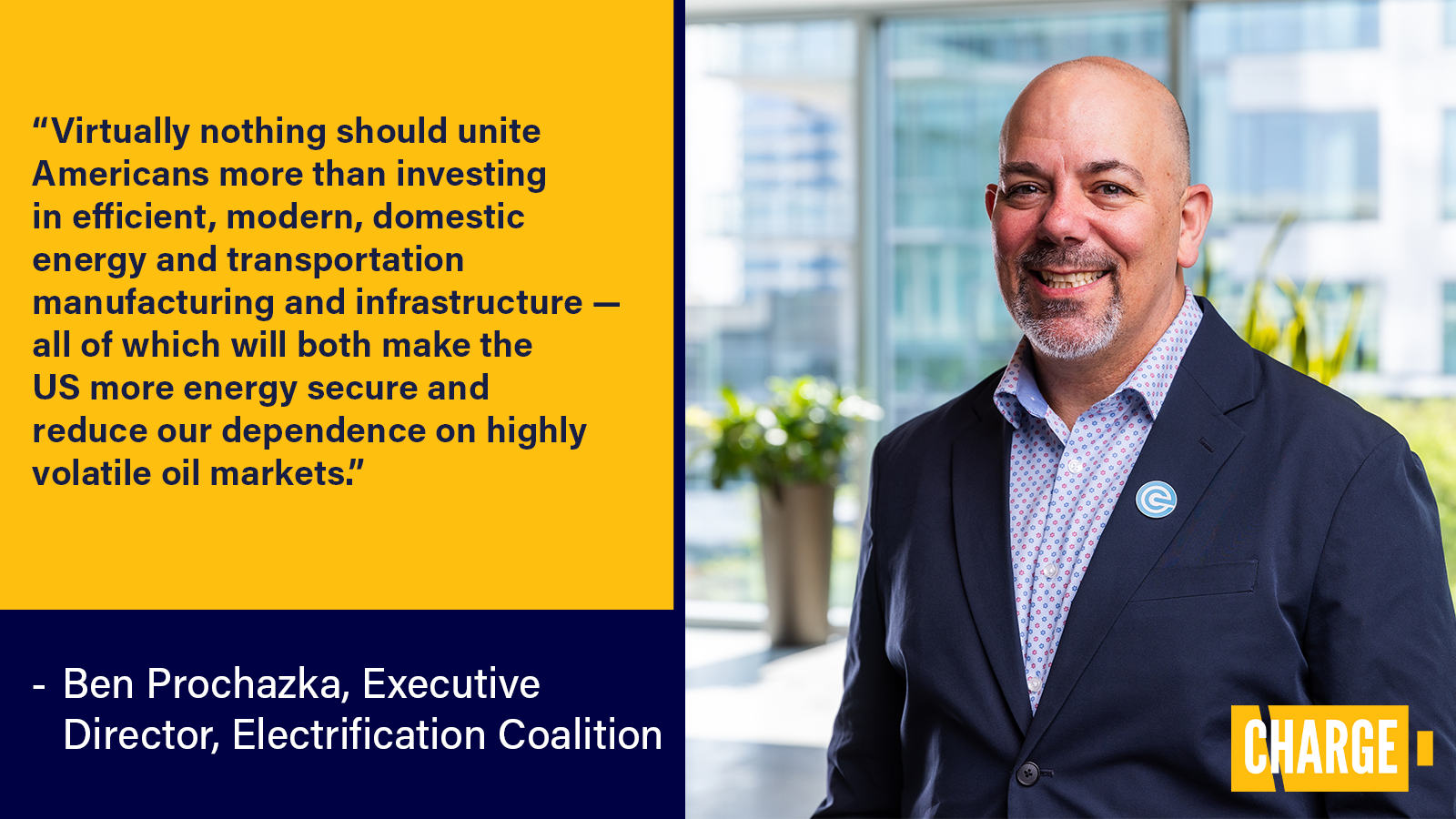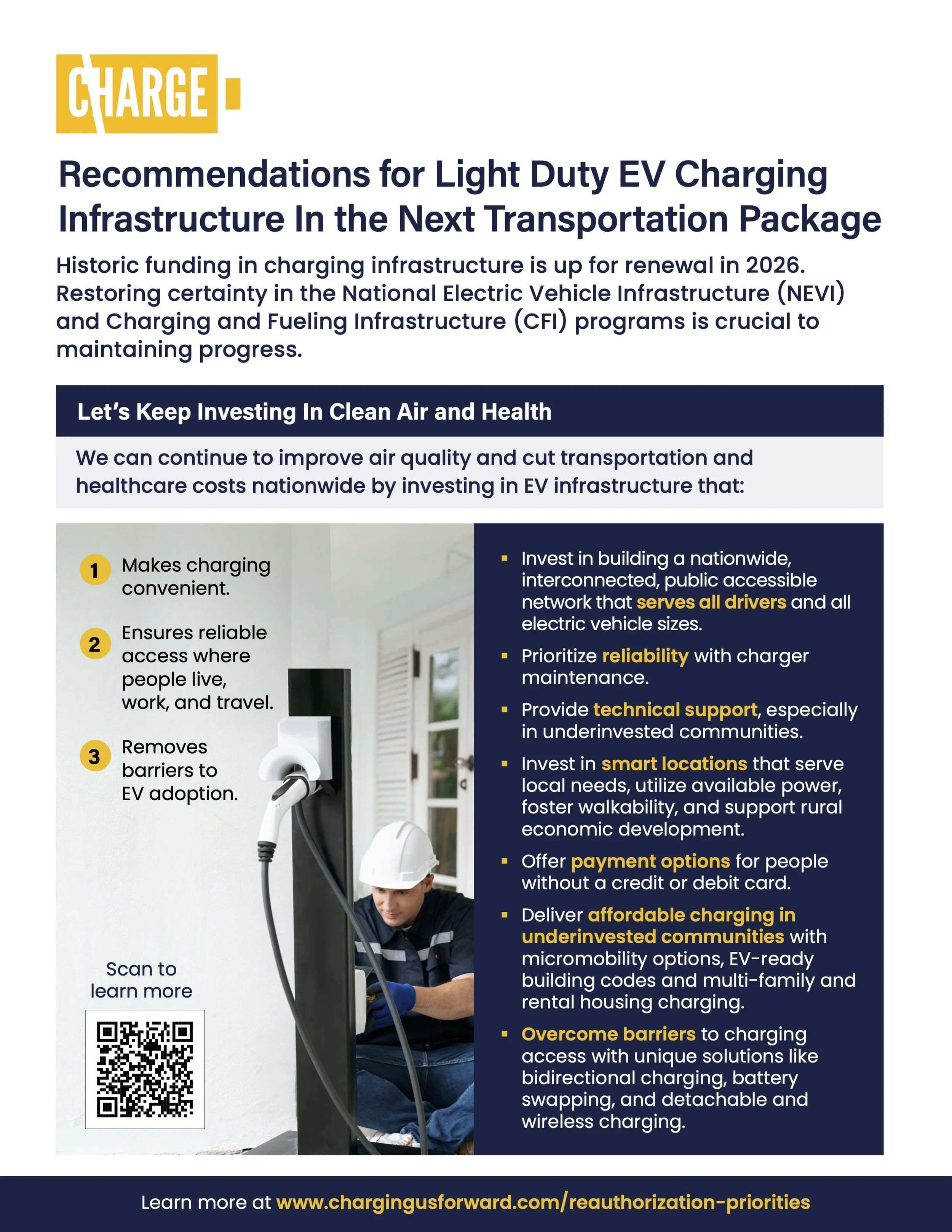Clean Transportation Works:
An Analysis of U.S. Investments
A report from CHARGE and Atlas Public Policy finds that clean transportation programs worth billions are cutting costs, creating good-paying jobs, and protecting public health.
Four sectoral analyses show the importance of reauthorizing eight clean transportation funding streams to continue these benefits. The report concludes with a summary of lessons learned to improve program implementation across utility providers, federal, state, and local governments.
What CHARGE members are saying
CHARGE’s diverse membership of EV industry leaders, consumer groups, public health organizations, and business entities calls on Congress to reauthorize billions in clean transportation investments before they expire in 2026, ensuring that communities in every state continue to benefit from safer, cheaper, and cleaner ways to get where they need to go.
Report Fact Sheets
The report finds that, cumulatively, federal clean transportation programs have supported $4.6 billion in investments and 14,400 jobs in domestic manufacturing, saving families money and boosting local economies in red and blue states alike. Below are fact sheets that break down the findings from the report’s four sectoral analyses that include recommendations from CHARGE on how to make the programs more efficient and effective.
By early 2025, states had obligated $526 million for nearly 4,000 electric vehicle (EV) charging ports at 990 locations, with nearly 60% of major highway corridors now covered by fast-charging stations.
Charging Infrastructure
New federal programs have already funded more than 2,000 zero-emission freight trucks and spurred $4.2 billion in private investment in truck manufacturing, supporting over 8,500 jobs.
Clean Freight
Federal investments have supported the purchase of over 4,600 zero- and low-emission transit buses and more than 200 bus facilities, while the EPA Clean School Bus Program is replacing 8,500 diesel school buses, saving an estimated $15–20 million annually in health costs.
Public Transportation
New federal programs like Safe Streets and Roads for All and Active Transportation Infrastructure Investment Program are reconnecting communities, reducing traffic deaths, and boosting local economies—though demand far outstripped available funding, with some programs oversubscribed by as much as 40-to-1.






















